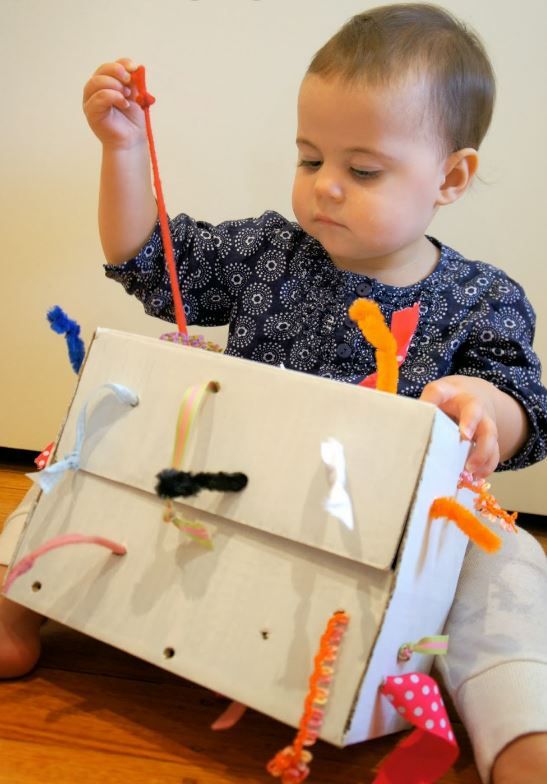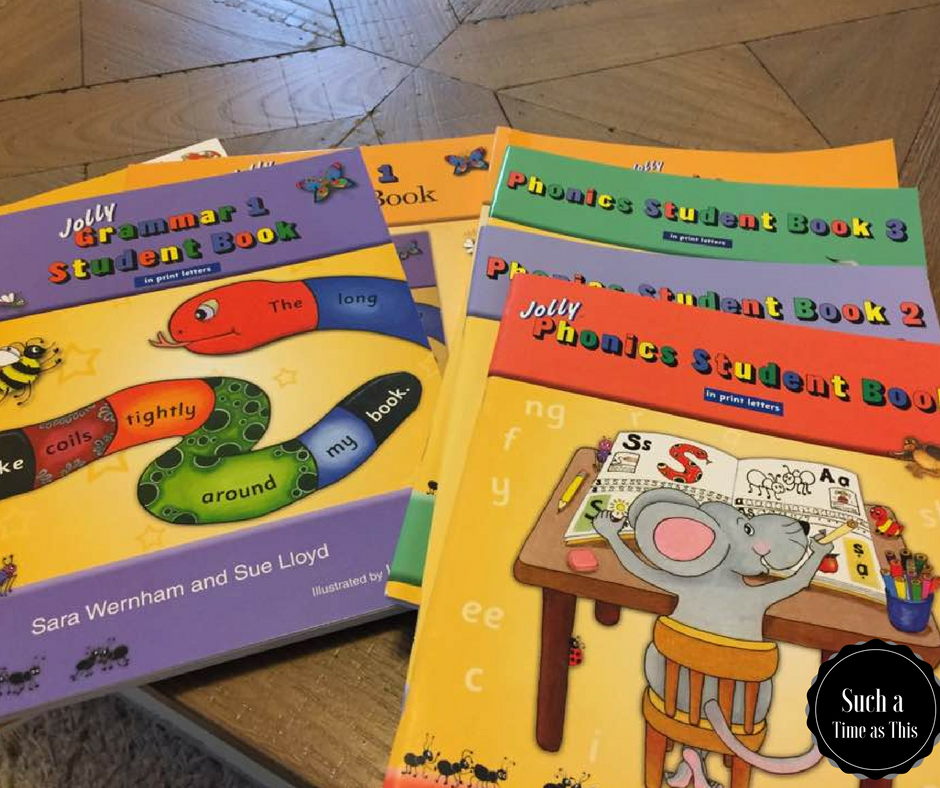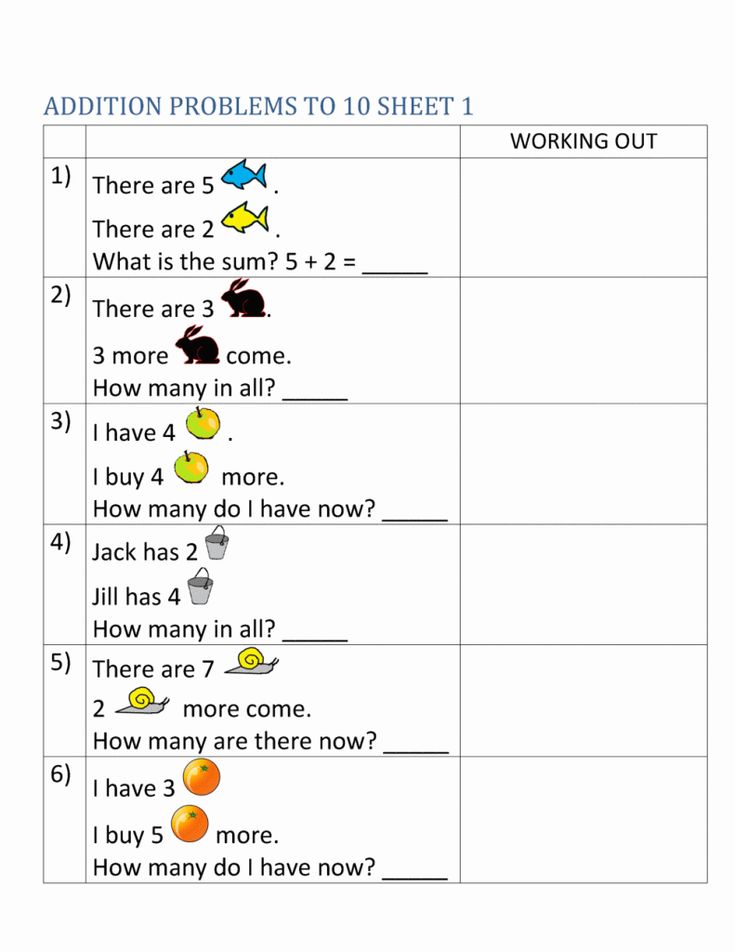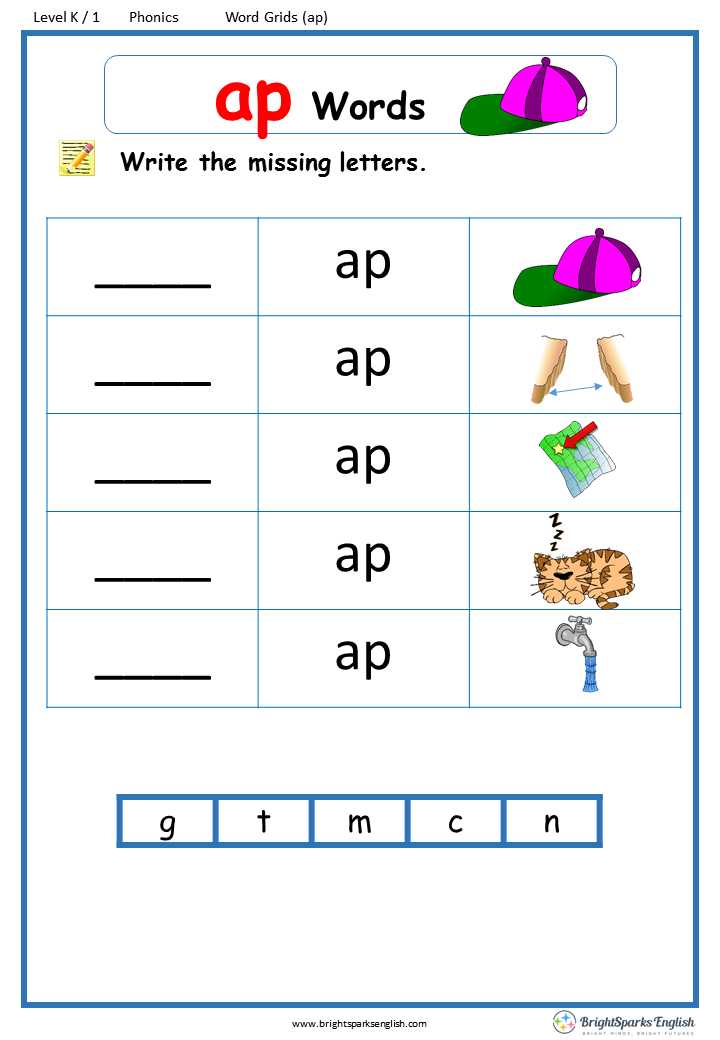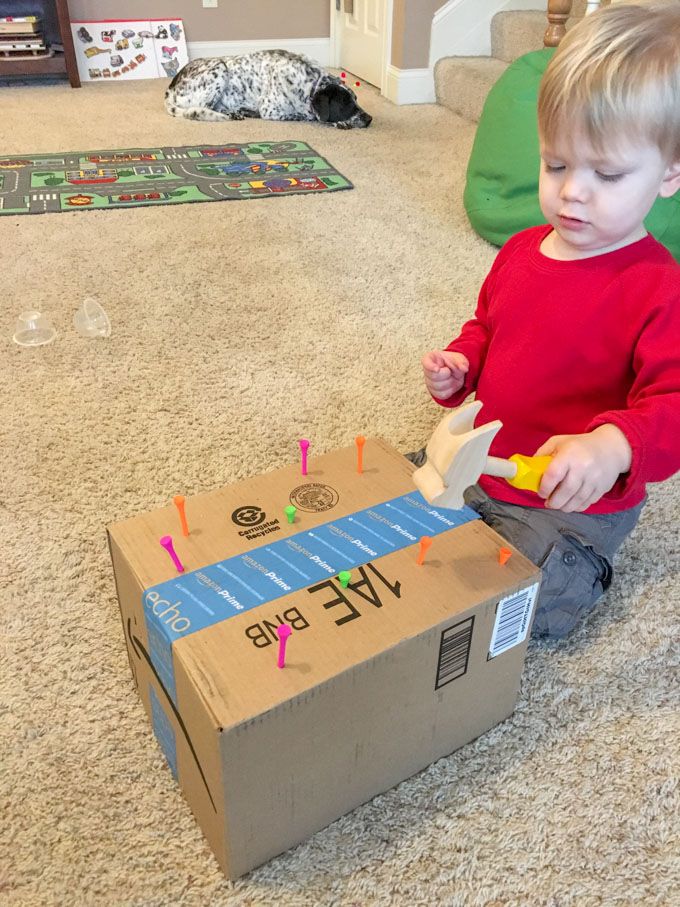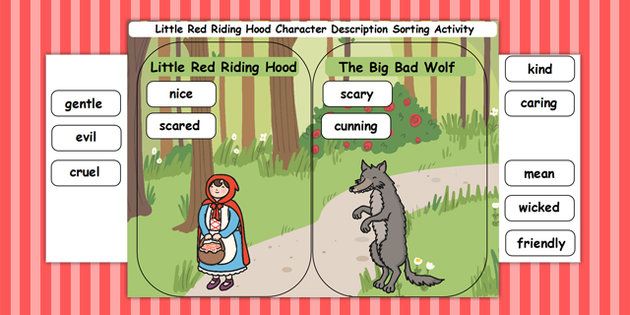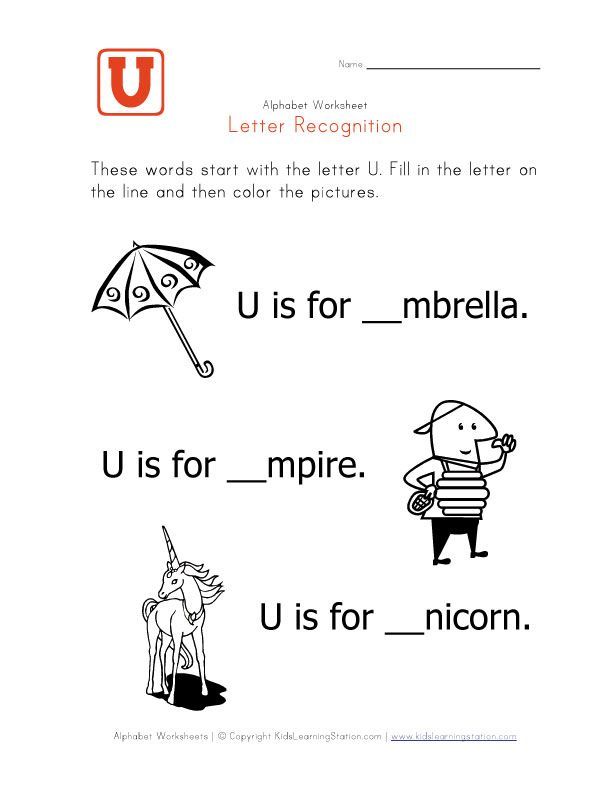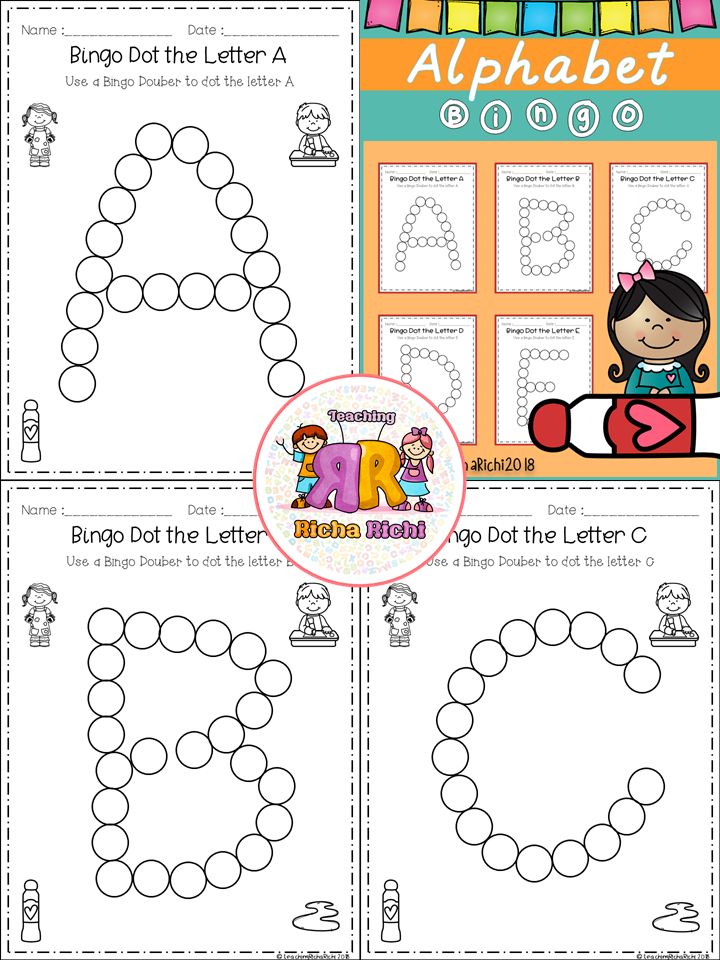Letters and sounds for kindergarten
Teaching Alphabet Letters and Sounds in Kindergarten -
Teaching alphabet letters and sounds is one of the foundations of literacy and early education. Students need to have a solid understanding of what a letter is, the sound(s) it makes and how each letter operates to make a readable word.
As a current kindergarten teacher, I have had lots of teachers message me and ask whether I teach letters or sounds first. The answer is simple, I teach both simultaneously. My reasoning for doing this is not only research based, (Ehri, Invernizzi, Cunningham, Calkins, and McBride-Chang), but also based on my own classroom experience.
My first 2 years in kindergarten, were spent teaching half-day, which equaled to 2.5 hours a day. Even though CCSS were in effect, they were no way that half-day kindergarten teachers could teach all of the standards explicitly, given the number of time students were in class. During those 2 years, I taught 1 letter a week and usually waited until the third or fourth day to teach the sound.
Of course, we didn’t finish the alphabet until March or April, which left very little time to expand the students’ reading toolbox.
If you follow me on social media or have heard me speak then you most likely know that I love to talk. I am passionate about little learners and I could go on and on about literacy! But for the sake of time and information overload, I am sticking strictly to how I teach alphabet letters and sounds in my classroom, for this blog post.
Where do I start?I start the first week of school! Yes, it’s true. Usually, by the second or third day, we have introduced each student by name and we have started working on writing our names, as well as other name activities. I take this opportunity as a teaching moment to tell the students that their names are made up of letters and letters make sounds. This leads into our daily chant of “Every Letter…Has a Name and Every Letter…Makes a Sound”. I don’t expound heavily on this, but at least I have started laying the basic blocks of their literacy house.
Explicitly teaching each letter in isolation, usually begins the second week of school. (Of course, this always depends on the makeup and structure of your class for the year.) I tend to keep the same routine for all 26 letters, with very little to no changes for the duration of all the letters. My literacy block is in the morning, right after our 15 minute morning recess.
Alphabet Warm-Up ReviewJust like many teachers do Number Talks at the beginning of their math lessons, I do an alphabet warm-up review each and every day. This exposes students to all the letters and sounds of the alphabet and it’s quick and fun! Here are my quick ideas for an alphabet warm-up.
- Alphabet Around the World with Letter Cards for letter or sound ID – Basically this is a quick game, where the students stand around the perimeter of our classroom rug and I show them a letter card. If they can quickly identify the letter name and/or sound of that particular letter, then they get to stay in the game.
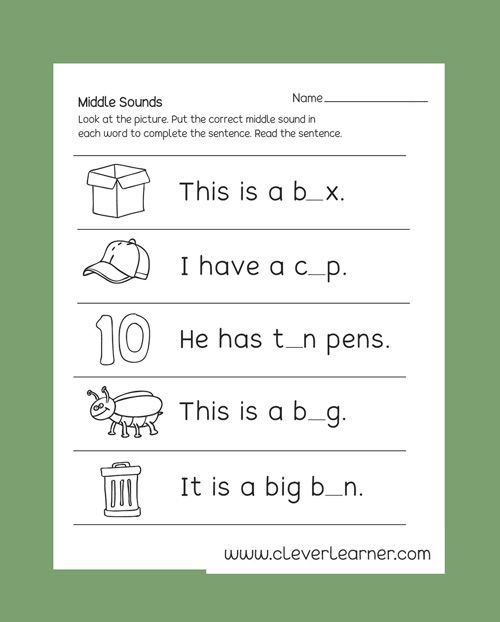 If they cannot correctly identify or make the sound for that specific letter, then they sit out till the next round. (I use these cards to play the game.)
If they cannot correctly identify or make the sound for that specific letter, then they sit out till the next round. (I use these cards to play the game.) - Songs and dancing are a MUST in my classroom and I try and combine them with academics every chance I get! There are so many awesome alphabet movement songs to choose from and we use a different one every day! Here is a list of some of my favorites:
- HeidiSongs – Letters and Sounds Alphabet Action Song
- Jack Hartmann – See It, Say It, Sign It Alphabet Song
- Jack Hartmann – Work Out to the Letter Sounds
- Have Fun Teaching – Alphabet Song
After our quick alphabet letter warm-up, my students sit down on the rug and we all turn to our All About the Letter Pocket Chart. I love to use this pocket chart, as it’s organized and has all the important pieces for our letter introduction.
Explicit Letter InstructionHere is how I use this pocket chart to introduce the letter.
- Introduce the letter, using its name and if it is a consonant or vowel; how many sounds it makes and what exactly that sound is.
- I model reading the letter poem, making sure to emphasize the explicit letter sounds and encouraging my students to make the letter sound.
- I model writing the upper and lower case letters, making sure to explain each stroke.
- I then share the 4 beginning sound picture cards that accompany that specific letter.
After using the All About Letter pocket chart, I have my students stand up to sing and do the movements to that specific letter song. And as the song is playing, I go around to each student and listen to the letter sound that they are making, as the song is playing. This is a great way for me to see if they are saying the sound correctly. I love using songs to practice and emphasize what I am teaching or have taught. It’s a form of whole-brain learning, plus kids of all ages NEED movement! I love to use songs from:
- HeidiSongs
- Jack Hartmann – Specific Letter Songs
- Have Fun Teaching – Specific Letter Songs
Using props and miniature items in the kindergarten classroom makes learning so much more fun! This is where Molly Muncher comes into play during our explicit letter lesson.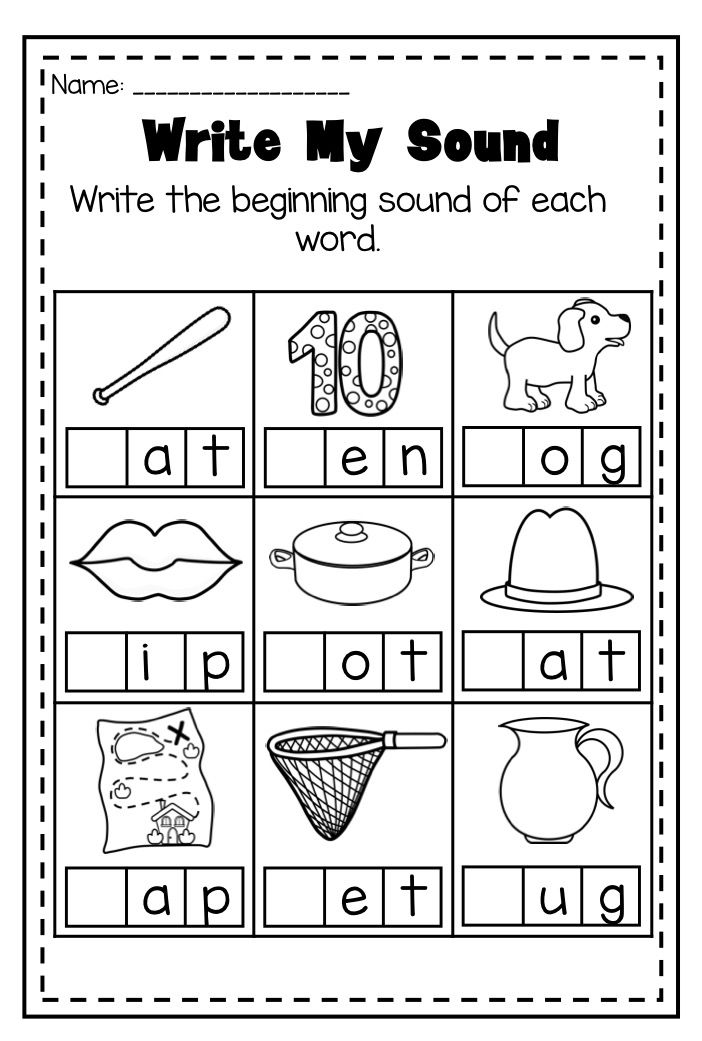
I use a simple plastic mini trash can as my Molly Muncher. You might be wondering what Molly Muncher does in the classroom? Well…she only eats items that begin with the letter that we are focusing on. I have a full set of alphabet sound cans that I use when ‘feeding’ Molly Muncher. The sound cans I have are from LakeShore and are quite expensive. But I found these on Amazon and they are cheaper and still accomplish the task! Here is what you need for a Molly Muncher:
- 1 small or mini trash can
- Doll hair & googly eyes
- Sound Can
After we have completed and finished our explicit letter lesson, it’s time for my students to go and practice independently. In my classroom, independent practice consists of tracing and writing the specific letter, as well as identifying pictures with the correct beginning letter, and identifying the letter in different font styles.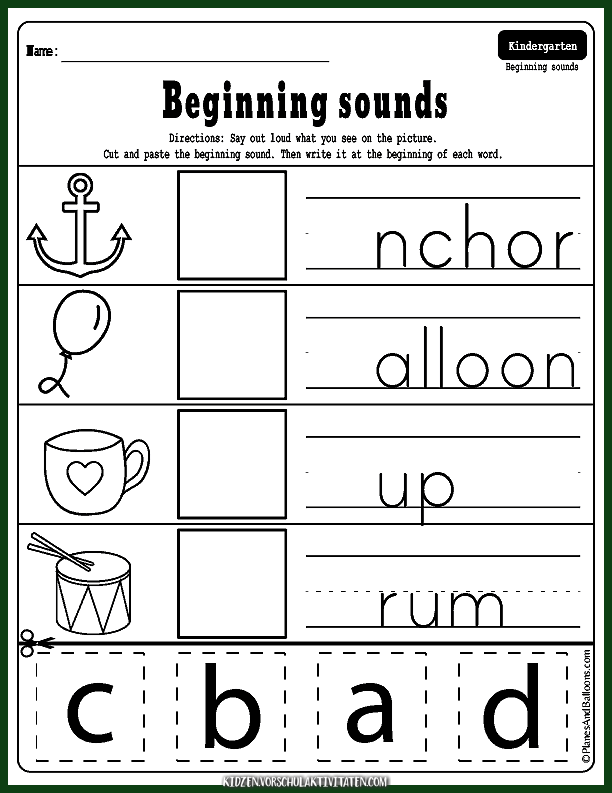 Here is what I use in my classroom for independent practice.
Here is what I use in my classroom for independent practice.
Beyond the Lesson – Practicing the Learning in Literacy Stations
After my students have completed their independent practice work, they go to literacy stations, where they will continue to practice their learning in a wide variety of ways and includes differentiation! You can read more on Literacy Stations here!
The very last part of my alphabet letter instruction is to complete an alphabet anchor chart. I use this as part of our beginning writing block. It’s a great opportunity for students to practice drawing and labeling with beginning letters and even the entire word. Each student has their own alphabet letter journal. Students follow along in their journal as I am creating our classroom letter anchor chart. The students generate the objects/pictures that go onto our classroom alphabet anchor chart and also add it to their personal anchor chart. You can download your FREE Alphabet Anchor Chart and Alphabet Journal HERE!
You can download your FREE Alphabet Anchor Chart and Alphabet Journal HERE!
Want to see me teach this lesson? You can watch me teach the letter Aa to my students HERE!
Do you know that Kindergarten Chaos offers personal development courses & workshops? I share my tried and true tips and ideas for teaching intentionally and with purpose and fun to the kids of TODAY!Tagged beginning soundslettersphonicsteaching the alphabet
Beginning Sounds Activities for Kindergarten
Curriculum | Featured | Letters & Letter Sounds | Reading
When learning to read, there are many phonemic awareness and phonics skills students must master.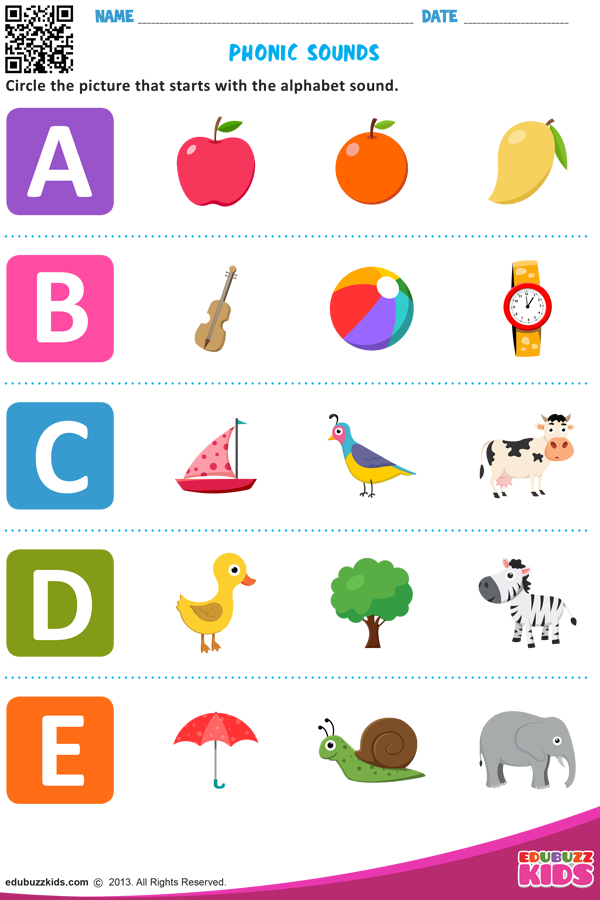 Learning letter names, letter sounds, and beginning sounds is key in helping students quickly decode and read texts. To give your students the exposure and practice they need, check out these beginning sounds activities for kindergarten.
Learning letter names, letter sounds, and beginning sounds is key in helping students quickly decode and read texts. To give your students the exposure and practice they need, check out these beginning sounds activities for kindergarten.
Why is it Important to Teach Beginning Sounds?
When teaching students to read, it’s important for them to understand that words are made up of letters and sounds. This knowledge helps them read and write more fluently.
Phonemic awareness and phonics skills are key in kindergarten. Phonemic awareness skills are when students understand that words are made up of various sounds. Phonics skills are what correlates the sound of a letter to the written letter itself.
Begin with teaching phonemic awareness skills so students learn to listen for and differentiate the sounds in words.
It can be tricky for students to hear the middle and ending sounds in words at first, which is why starting with beginning sounds is so effective.
Digital Beginning Sounds Activities
Since it’s important for students to first understand what beginning sounds are and learn to listen for them in words, you need a variety of beginning sounds activities for kindergarten for them to practice with.
A great way to engage your students is with interactive digital phonemic awareness activities like beginning sounds Boom Cards. These Boom Card decks give students a variety of opportunities to practice listening for the same beginning sounds in words.
Plus with audio directions, audio picture names, and the self-checking feature, your students will be able to work independently with success.
Hands-on Beginning Sounds Activities
Mastering beginning sounds takes a lot of practice and exposure. Therefore, you need a wide array of hands-on beginning sounds activities for kindergarten that your students can work with.
You can incorporate these hands-on activities into your morning tubs, literacy centers, or fast finisher activities.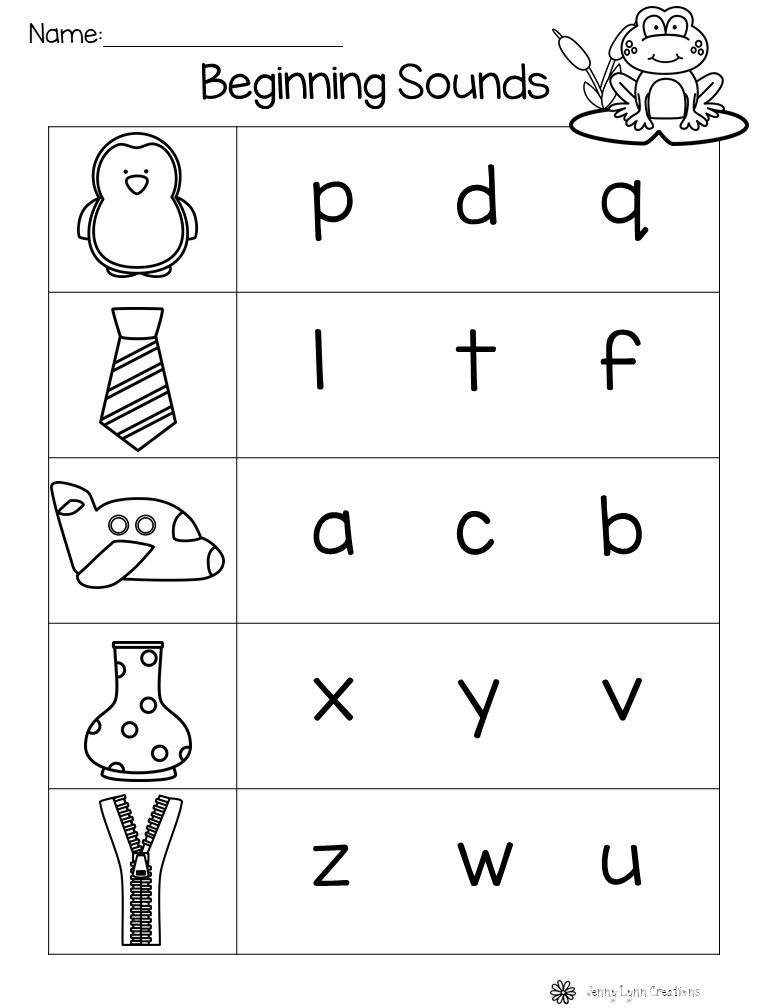 This is a great way to keep your students practicing their skills throughout the day.
This is a great way to keep your students practicing their skills throughout the day.
Letter Sound Mats
One of my favorite ways to practice beginning sounds is with letter sound mats and magnetic letters. Students will say the picture name aloud, identify the beginning sound, and match the correct magnetic letter to the picture.
If you have a set of picture cards and magnetic letters, you can simply have students flip a card, identify the beginning sound, and match the letter.
Build the Sound Mats
Another great beginning sounds activity for kindergarten is build the sound mats. This activity allows students to identify the beginning sound in the picture and build the letter using manipulatives.
Students will get extra fine motor practice as they work on both phonemic awareness and phonics skills.
Beginning Sound Mazes
Another fun way to switch up the learning is to use beginning sound mazes with your students. As they cover the letters that make the focus sound on the mat, they’ll work their way through the maze.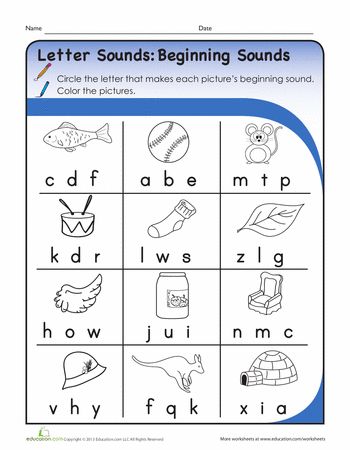
This makes learning feel like a game for students, which is a sure way to keep them on task, engaged, and motivated.
If you loved these hands-on beginning sounds activities for kindergarten, you can grab them all plus more in my Beginning Sounds and Letter Sounds Bundle!
No Prep Beginning Sounds Activities
While using digital and hands-on beginning sounds activities is key, it’s also nice to keep a good stash of no prep activities on hand.
Add these no prep beginning sounds activities to your morning work, independent literacy stations, or keep them in a sub tub. They also make great time filler activities if you have a few minutes between activities.
If you need a quick way to assess your students on beginning sounds, you can use these no prep activities as an informal assessment as well.
How to Assess Your Students on Beginning Sounds
As your students learn and grow their beginning sounds skills, you want to assess them frequently.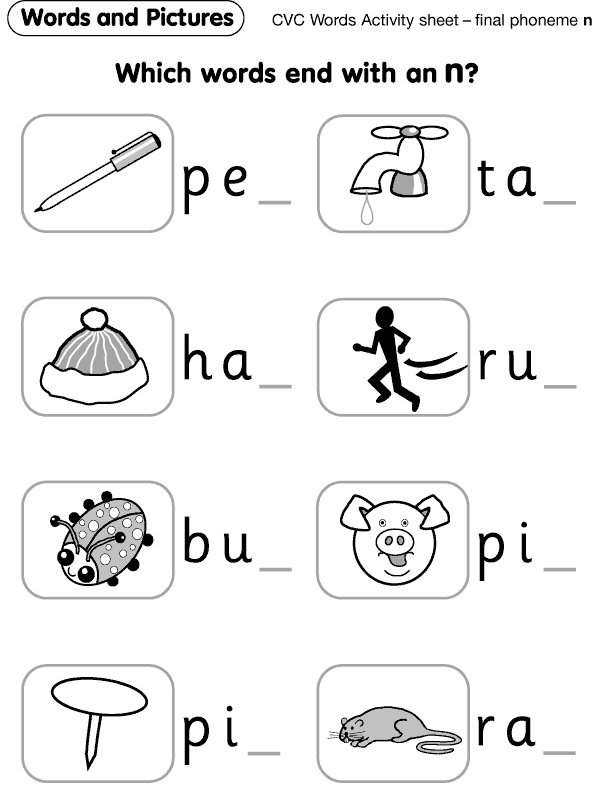 This allows you to see which beginning sounds they are mastering and which sounds they need help with.
This allows you to see which beginning sounds they are mastering and which sounds they need help with.
Using beginning sounds picture cards and a checklist is a great way to gauge your students’ understanding. You can monitor students quarterly, monthly, or every 2 weeks if they need more support.
Beginning Sounds Assessment Freebie
To make assessing your students on beginning sounds and letter sounds easy, I created an assessment freebie for you.
This freebie includes a beginning sounds assessment checklist and beginning sounds pictures. There is also a letter sounds assessment page and checklist to help you assess your students’ uppercase and lowercase letter sound recognition.
You can fill out the form below to get the beginning sounds and letter sounds assessment freebie sent directly to your inbox!
I hope these beginning sounds activities and assessments for kindergarten make learning more fun and effective in your classroom!
Post Tags: #beginning sounds#Freebies#letter sounds#literacy#literacy centers#reading
Similar Posts
We know letters and sounds | The plan of the lesson training (preparatory group) on the topic:
Municipal Budgetary Educational Institution Kindergarten Combined type No.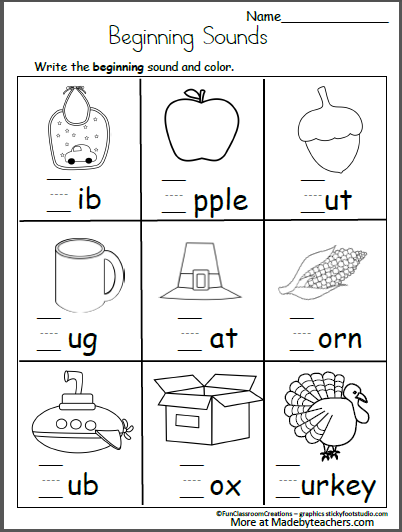 15 “Thumbelina”
15 “Thumbelina”
Topic: Summary for teaching literacy “We know the letters and sounds”
(preparatory group)
Educator: Serkina Valentina Ivanovna, Stary Oskol, 2013
Program tasks: to consolidate the knowledge of sounds a, y, o, M. to improve the ability of children to compose and read syllables by carved alphabet and syllabic tables. Continue to consolidate the ability of children to pronounce words with the selection of the desired sound and find the place of the sound in the word. To form the ability of children to divide words into syllables. Develop attention, logical thinking. Cultivate friendships.
Material for the lesson: magnetic board, magnetic alphabet for work in literacy classes, cut alphabets for each child; large split alphabet, toys (bus, Olya doll, matryoshka, car). Didactic game "We divide words into syllables."
Course of the lesson
Educator - Children, look, guests have come to us. Say hello to them and give your smiles (children say hello).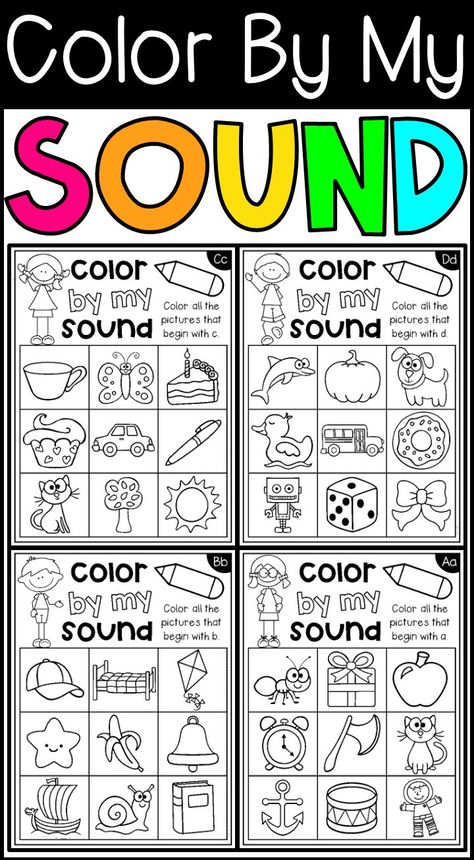
- Children, when I went to the kindergarten this morning, I saw some autumn invitations on the tree. One of them is for us.
This is what is written here: “I invite children of the group“ Chamomile ”to the autumn ball at Wednesday at 10 a.m.“ Autumn ”
teacher -look, children, which of these letters do you know? Children - A, O, U, M. . . . . . . . . . Educator - That's right, well done! We have already met them in previous lessons. Do you know the difference between letters and sounds? Children - We see and write letters, and we hear and pronounce sounds. Educator - What is the difference between vowels and consonants? Children - We can sing vowel sounds, but consonants are not sung. The teacher is correct. What can you say about the vowel o? Children - When we pronounce the sound Oh, the lips are stretched forward, but not as much as when pronouncing the sound U.
Children - When we pronounce the sound A, the mouth is wide open, the lips are not pulled forward. Educator - Children, tell me the sound M is a vowel or a consonant? Children - Consent. Educator - With what help is the sound M pronounced? Children - The sound M is pronounced with the help of lips. Educator - A barrier forms in the mouth - that means it's not a vowel, but a consonant sound. Children, pay attention, what an interesting picture. Who is it? Children - Ant. Educator - What is the first sound in this word? Children - Sound M. . . . . . . . . . Educator - Do you know this letter? Children - The letter M. . . . . . . . Now name the second sound. Children - Sound U. . . . . . . . . . . Children - Letter U. . . . . . Educator - Right! You recognized her. I will put it next to the letter M. They will live together in a house. Now let's talk about sounds. What chip will denote the sound M? Children - Blue chip, because it is a consonant sound. Educator - What chip will denote the sound U? Children - Red chip. Educator - That's right. Read this syllable. Children - MU. Educator - Children, who will determine how many syllables are in the word ant? Children - Three syllables.
Educator - Children, tell me the sound M is a vowel or a consonant? Children - Consent. Educator - With what help is the sound M pronounced? Children - The sound M is pronounced with the help of lips. Educator - A barrier forms in the mouth - that means it's not a vowel, but a consonant sound. Children, pay attention, what an interesting picture. Who is it? Children - Ant. Educator - What is the first sound in this word? Children - Sound M. . . . . . . . . . Educator - Do you know this letter? Children - The letter M. . . . . . . . Now name the second sound. Children - Sound U. . . . . . . . . . . Children - Letter U. . . . . . Educator - Right! You recognized her. I will put it next to the letter M. They will live together in a house. Now let's talk about sounds. What chip will denote the sound M? Children - Blue chip, because it is a consonant sound. Educator - What chip will denote the sound U? Children - Red chip. Educator - That's right. Read this syllable. Children - MU. Educator - Children, who will determine how many syllables are in the word ant? Children - Three syllables.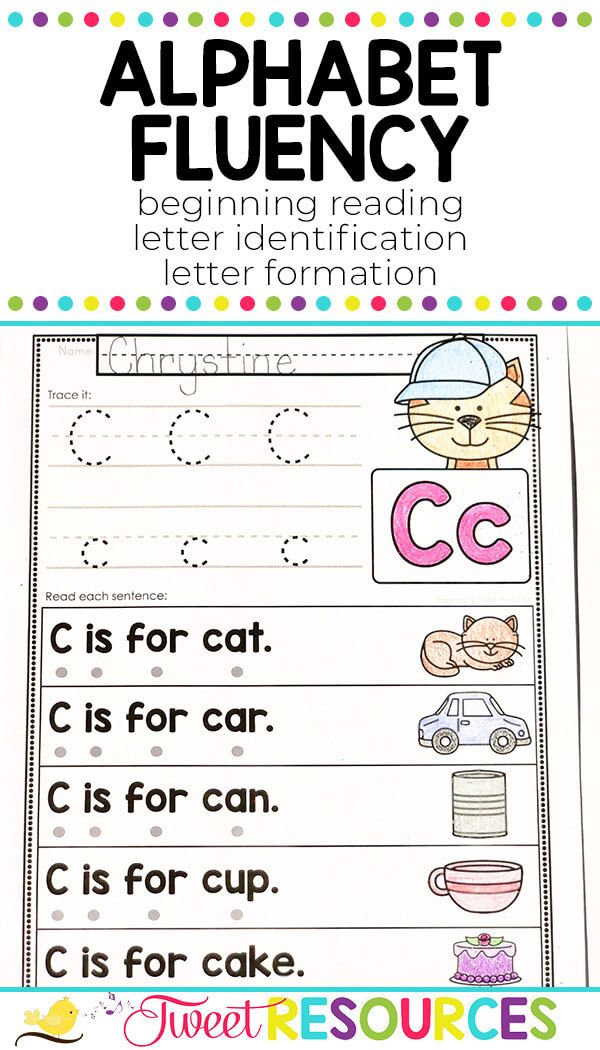 Educator - How can you check whether Lera correctly determined that there are three syllables in the word ant? Children - Clap your hands. Educator - Now I will say the words, and you will determine by ear how many syllables are in this word: AU - 2 syllables; UM - 1 syllable.
Educator - How can you check whether Lera correctly determined that there are three syllables in the word ant? Children - Clap your hands. Educator - Now I will say the words, and you will determine by ear how many syllables are in this word: AU - 2 syllables; UM - 1 syllable.
Educator - What good fellows you are, you correctly divided the words into syllables.
Respiratory gymnastics
Children call the sounds of A, o, y, and then syllables am, ohm, mind, accompanying the movements of
Teacher -girls and boys, remember, in past classes, we taught you the poems to sounds with you A, O, U, M. Who wants to read a poem on the sound A so that we hear this sound in it.
A August. Sunset behind the forest. Scarlet storks fly to the forest. Asters blushed in the flower beds in the garden. Scarlet shadows tremble on the pond. Scarlet ducks glide across the pond... It's a pity that the sunset is already fading!
Educator - What a fine fellow you are, Kostya. - - - To the sound of U, we also know the poem. Who will tell? Zhenya, please.
- - - To the sound of U, we also know the poem. Who will tell? Zhenya, please.
The duck is tired of the duck on the pond to teach their ducklings to swim mothers in sight of their mom do not want to swim. The duck is terribly tormented: Well, what will come of them?
Educator - Children, now I will give you a riddle, and you guess it. It’s not the sun’s fault anymore, What cotton wool hangs in the sky. - What is it?
Children - Cloud. Educator - What is the first sound in the word CLOUD? Children - the sound of O. . . . . . . . . . (child speaks).
O . . . . . . . Cloud, cloud, wool rings. Very you, a cloud, similar to sheep.
Teacher - Violetta will tell us a riddle poem with the sound M. Children, at the end of the poem, be careful and guess the last word.
m we are not diving in the river - we dive in milk. The milk of the field flooded, The bridge, the river and the bushes. Milk at home covered, Gently pours from a height. We are at the bottom now.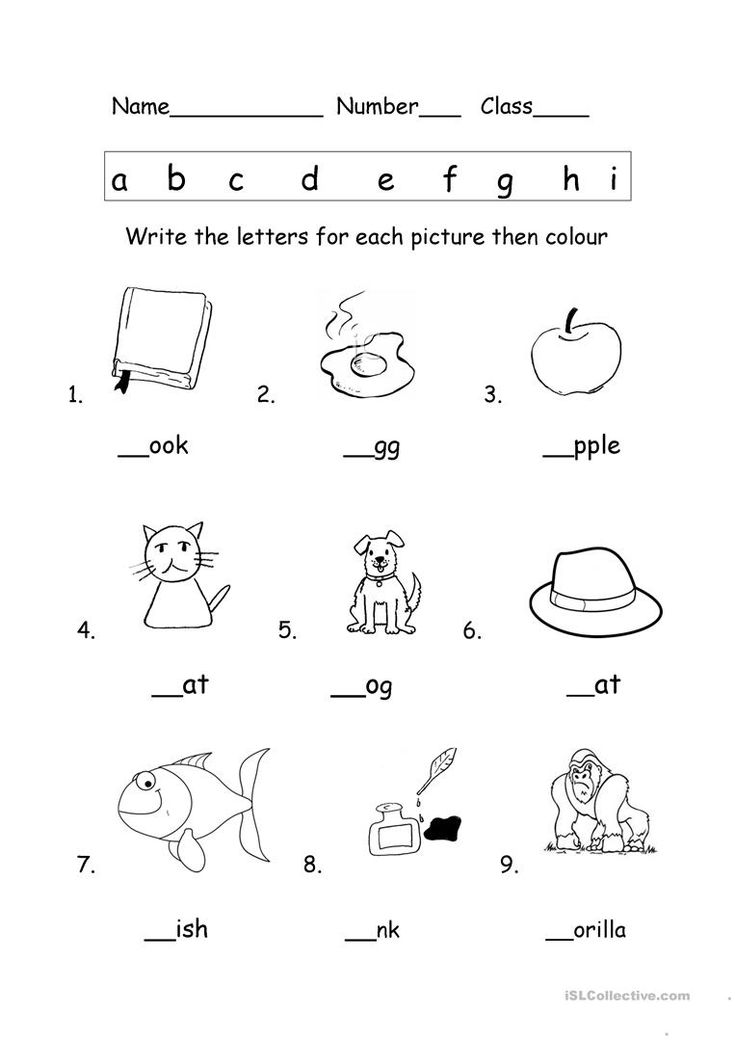 We are in the milky depths. We are not swimming in the ocean - We are swimming in the thick .... (Fog)
We are in the milky depths. We are not swimming in the ocean - We are swimming in the thick .... (Fog)
PHYSICAL MINUTE
Educator - Children, and now we will work with the split alphabet. Please find the letter A and the letter M. Lay them out. Katyusha will go and lay out the rest of the syllables on our large carved alphabet (and so on in turn).
| AM | MO | AU |
| ohm | 9000 m. MA | UA 9000 9000 |
| MU | MO |
Educator - Children, now read these syllables together.
GYMNASTICS FOR THE EYES
"The Sun" - an exercise for the eyes
We played, we read . We blink a little, we freeze for a moment, and then we go for a walk.
Educator - Children, I want to offer you an interesting game "We divide words into syllables. " Arrange small cards on large cards in this way: to the trailer with one window - cards with words from one syllable, with two windows - from two syllables, with three - from three syllables. Educator - What good fellows you are, you laid out the cards so quickly and correctly! Educator - Imagine that you went for a walk in the forest each with your mother. Bush for bush, tree for tree, and got lost. Look at my lips: . . . . . . . . . . . . . . - What did I just say? Children - AU. Educator - That's right! Educator - And now, please, from the syllable MA and another syllable MA, make a word. Children - Mom. Educator - And now from the syllable A and the syllable U. What happened? Children - AU. Educator - Make a sentence from these words. Children - Mom, ay! Educator - Swap these words. Children - Oh, mom! Educator - Very good! Educator - Children, I completely forgot, our beloved Alenka invited us to visit her and asked us to help her. Do you want to help her? Children - Yes! Educator - Look how many toys are here (bus, Olya doll, nesting doll, car).
" Arrange small cards on large cards in this way: to the trailer with one window - cards with words from one syllable, with two windows - from two syllables, with three - from three syllables. Educator - What good fellows you are, you laid out the cards so quickly and correctly! Educator - Imagine that you went for a walk in the forest each with your mother. Bush for bush, tree for tree, and got lost. Look at my lips: . . . . . . . . . . . . . . - What did I just say? Children - AU. Educator - That's right! Educator - And now, please, from the syllable MA and another syllable MA, make a word. Children - Mom. Educator - And now from the syllable A and the syllable U. What happened? Children - AU. Educator - Make a sentence from these words. Children - Mom, ay! Educator - Swap these words. Children - Oh, mom! Educator - Very good! Educator - Children, I completely forgot, our beloved Alenka invited us to visit her and asked us to help her. Do you want to help her? Children - Yes! Educator - Look how many toys are here (bus, Olya doll, nesting doll, car).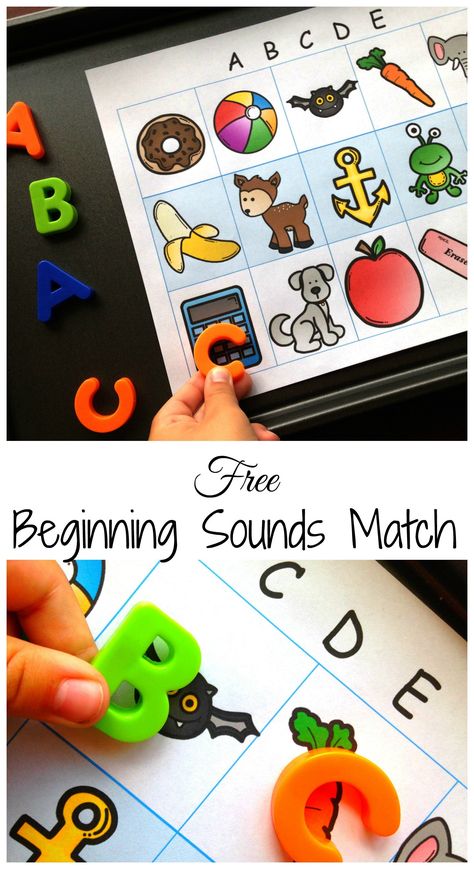 And she needs help here. Determine the place of the sound in the name of these toys. (Children determine the place of sound in words). Educator - Well done, girls and boys. Elena was satisfied. We taught her, and she will cope with such a task. You did well today. We fixed the sounds. Which? Children - A, O, U, M. . . . . . . . . . . . . . . . . . . I am very pleased with you guys.
And she needs help here. Determine the place of the sound in the name of these toys. (Children determine the place of sound in words). Educator - Well done, girls and boys. Elena was satisfied. We taught her, and she will cope with such a task. You did well today. We fixed the sounds. Which? Children - A, O, U, M. . . . . . . . . . . . . . . . . . . I am very pleased with you guys.
Children say goodbye to the guests
Open lesson on the topic “Vowels and letters denoting vowels. The letters e, e, u, i and their functions in the word. The syllabic and meaningful role of vowels ”is an autonomous non -profit educational organization school“ Vector ”
Anoo school“ Vector ”
Autonomous comprehensive organization
Vector
- 22 Mytishchi, st. Letnaya, building 21B
- Mytishchi, Novomytishinsky avenue, 26a
- [email protected]
- +7 (495) 594-98-99
FEEDBACK
Telegram
ANEO SCHOOL "VECTOR"
AUTONOMOUS NON-PROFIT GENERAL EDUCATIONAL ORGANIZATION
SCHOOL "VECTOR"
- Mytishchi, st.
 Letnaya Building 21B
Letnaya Building 21B - [email protected]
- +7 (495) 594-98-99
FEEDBACK
Telegram
On February 27, 2018, in the 1st grade, an open lesson was held on the topic “Vowels and letters denoting vowel sounds. The letters e, e, u, i and their functions in the word. The syllable-forming and semantic role of vowels.
| On February 27, 2018, in the 1st grade, an open lesson was held on the topic “Vowels and letters denoting vowel sounds. The letters e, e, u, i and their functions in the word. The syllable-forming and semantic role of vowels" At the lesson, first-graders worked individually, in pairs and in groups. In order to determine the topic of the lesson, the guys "populated" houses where vowel sounds and letters of vowel sounds live; explained to the Hedgehog when the letters e, e, u, i denote two sounds, and when - one sound. Then they helped Hedgehog determine the number of sounds in words with the letters e, e, u, i. To get acquainted with the syllable-forming and semantic role of vowels, first-graders made up words from syllables; they changed one letter denoting a vowel sound to its “girlfriend” to get a new word. At the end of the lesson, the children evaluated their work using drawings of the sun, the sun with a cloud, and the clouds. All first-graders rated their work in the lesson positively: “I succeeded in everything” | |
|
| |
Addresses
- g.o. Mytishchi, Letnaya str. 21B
- g.o. Mytishchi, Novomytishinsky prospect, 26a
- g.o. Mytishchi, Novomytishinsky prospect, 32a
Contacts
- +7 (495) 594-98-99
- vector-school@mail.
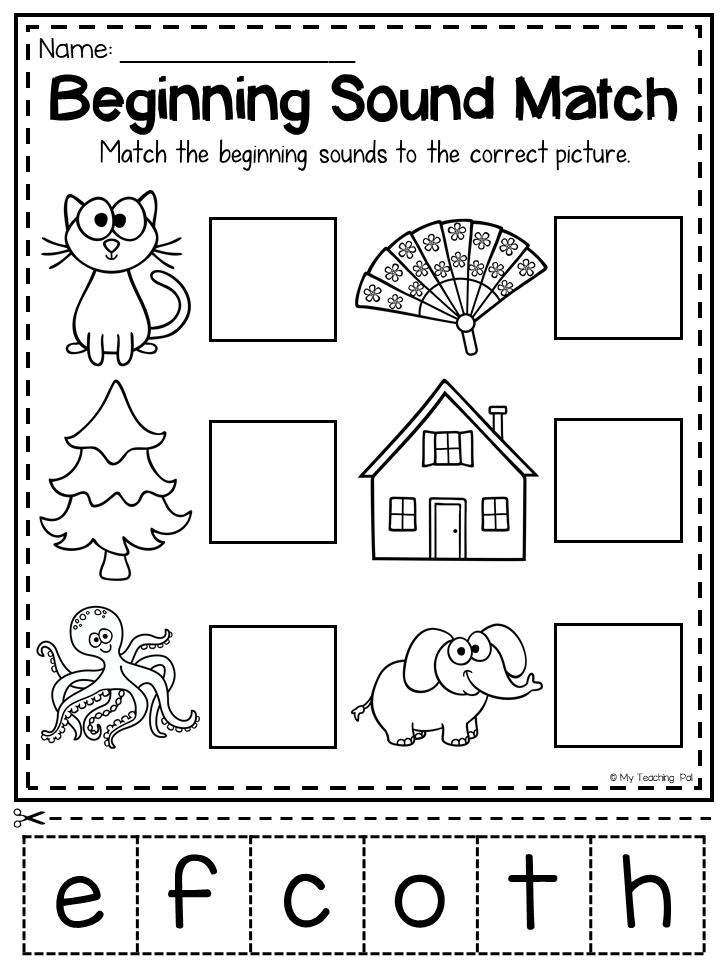

 Participating in the game "I'll take you with me", the guys updated their knowledge on the topic, and then fixed the spelling of words with the letters e, e, u, i.
Participating in the game "I'll take you with me", the guys updated their knowledge on the topic, and then fixed the spelling of words with the letters e, e, u, i. 